- News
- Reviews
- Bikes
- Accessories
- Accessories - misc
- Computer mounts
- Bags
- Bar ends
- Bike bags & cases
- Bottle cages
- Bottles
- Cameras
- Car racks
- Child seats
- Computers
- Glasses
- GPS units
- Helmets
- Lights - front
- Lights - rear
- Lights - sets
- Locks
- Mirrors
- Mudguards
- Racks
- Pumps & CO2 inflators
- Puncture kits
- Reflectives
- Smart watches
- Stands and racks
- Trailers
- Clothing
- Components
- Bar tape & grips
- Bottom brackets
- Brake & gear cables
- Brake & STI levers
- Brake pads & spares
- Brakes
- Cassettes & freewheels
- Chains
- Chainsets & chainrings
- Derailleurs - front
- Derailleurs - rear
- Forks
- Gear levers & shifters
- Groupsets
- Handlebars & extensions
- Headsets
- Hubs
- Inner tubes
- Pedals
- Quick releases & skewers
- Saddles
- Seatposts
- Stems
- Wheels
- Tyres
- Health, fitness and nutrition
- Tools and workshop
- Miscellaneous
- Cross country mountain bikes
- Tubeless valves
- Buyers Guides
- Features
- Forum
- Recommends
- Podcast
review
£2,399.99
VERDICT:
There are highlights when it comes to stiffness and aero performance in the frame, but it's a mixed bag elsewhere
Weight:
8,040g
Contact:
At road.cc every product is thoroughly tested for as long as it takes to get a proper insight into how well it works. Our reviewers are experienced cyclists that we trust to be objective. While we strive to ensure that opinions expressed are backed up by facts, reviews are by their nature an informed opinion, not a definitive verdict. We don't intentionally try to break anything (except locks) but we do try to look for weak points in any design. The overall score is not just an average of the other scores: it reflects both a product's function and value – with value determined by how a product compares with items of similar spec, quality, and price.
What the road.cc scores meanGood scores are more common than bad, because fortunately good products are more common than bad.
- Exceptional
- Excellent
- Very Good
- Good
- Quite good
- Average
- Not so good
- Poor
- Bad
- Appalling
Felt's AR frameset is very fast and very stiff – perfect for racers and even time triallists. However, as a complete bike the AR4 has some potential shortcomings that you should be aware of before parting with your £2,399.99.
- Pros: Aero frameset, time trial adaptability, stiffness
- Cons: Basic wheels, tyre clearance, poor brakes, stiffness
When it comes to creating aero road bikes, Felt has a strong track record thanks to its origins in (whisper it) triathlon, and the 'AR' frame is its latest crack at creating a speed demon machine – a frame that it says forms the foundation of 'best-performing aero road bike in the world'.
Felt also prides itself on using clever carbon frame manufacturing techniques, and with its striking looks taking centre stage when it landed in the road.cc offices, there was a queue of people lining up to take the AR4 for a spin...
Frame and fork
The lucky person selected for the task was me, but before swinging my leg over it I got in touch with Felt's PR man Andreas Lieberherr to get the lowdown on the frameset.
He explained that the frame features Felt's third-tier, entry-level carbon – known as UHC Performance Carbon Fibre – which ostensibly differs from the more premium Advanced and Ultimate blends because it doesn't feature TeXtreme, a premium carbon material that allows frames to be laid up in a lighter, stiffer (and more expensive) construction.
The AR4 is about performance value, then, and while Felt doesn't quote numbers, the 56cm test bike in its entirety weighs in at 8.04kg on road.cc's Scales of Truth – not bad for a bike with very clear and obvious aero sections around the head tube, down tube, seat tube and bottom bracket.
The frame is laid up into an aggressive race geometry, with a 392mm reach and 567mm stack height marrying to a 988mm wheelbase that creates a direct-feeling front end and responsive overall ride. What's clever is that the bike is designed to transform into a machine suitable for time trials, with that bladed Varimount seatpost reversible to move you further forward and optimise your position on time trial bars.
Felt calls it 'Variable Geometry Optimised', or VGO for short, and in pure numbers it means the seatpost can be switched around from the standard 72.5-degree position to a steep, time trial-friendly 78.5 degrees.
Elsewhere there are design features aimed at optimising aero performance including rear brake calliper mountings hidden away under the chainstays, a narrow 'Twin Tail' bridgeless seatstay design made possible by the removal of the traditionally mounted rear brake calliper, and a twin-tail fork crown that smooths airflow from the straight Advanced carbon fork and around the down tube.
These relatively complex shapes, including the deep-section aero tubing with squared Kammtail-like rear sections at the down tube, are made possible using Felt's InsideOut carbon moulding technology. According to Felt, this process – using specially designed moulds inside the frames during the lay-up process – creates smoother resin finishes, allowing for more complex shapes to be produced without telltale signs of carbon overlapping or uneven surfaces.
The rear triangle features a tightly fitting cutout (so tight that in reality you can only fit 23mm tyres in the gap without risking tyre rub) to reduce rear wheel turbulence, and that's complemented by the 'Gap Shield', which are specifically designed flares on the seatstays and chainstays to help manage the all-important boundary layer of air as it flows over the area.
Meanwhile, the BSA bottom bracket is shrouded in a serious wedge of carbon fibre to provide structural rigidity when you lay the power down. Like the rest of the bike, it's slim in profile to cut as clean a line as possible through the air, rather than wide-stanced like most carbon all-rounders.
Naturally, we also find internal cable routing, ready for upgrading to Shimano or Campagnolo electronic drivetrains, should you want to.
And, what's the aero bottom line? Well, Felt claims that compared to the next best performing bike in its benchmark wind tunnel testing (300w output over a 40km 'typical' time trial course), the AR frame saves 43 seconds over its next closest rival, the Cervelo S5. Make that 66 seconds over the Specialized Venge, 68 over the Giant Propel and 75 over the Scott Foil.
Certainly the raw stats are impressive, but the question is how those claims translate into real world performance.
Ride and handling
There's no question that the Felt AR is designed as a tool for reaching ultimate speeds rather than a more versatile aero all-rounder, the likes of which we see more and more of these days.
It's properly rigid – stiff around the bottom bracket in the extreme – while the bedrock of the bike formed by the BB, the aero profiled down tube and chainstays is well up to the task of transferring any and all lateral force that I can produce.
As a result, acceleration is impressive despite the basic rolling stock, as all the torque produced is funnelled into the drivetrain and wheelset. No doubt a light set of mid-section carbon clincher wheels would set the ride alight, but your options are limited given the lack of tyre clearance on the Felt and the trend towards ever-wider rims, which in turn blow tyres wider.
This means that while the bike is no doubt ultra-slippery in the wind tunnel, and similarly so in the real world despite relatively sharp tube profiles, comfort is at a premium here. The narrow 23mm tyres contribute to a shaky ride given the higher pressures needed, with proven downsides for ultimate rolling resistance too.
Still, it's the lack of compliance that tells over longer distances when using this road bike for its primary purpose. Sure, the bladed, cut-out seatpost with 3T mountings provides a reasonable amount of flex so your rear isn't totally ruined after a 100km ride, but the alloy Devox cockpit is less impressive. It's noticeable how much more vibration rumbled through my hands and forearms compared to the Rose X-Lite 6 Disc I reviewed a few weeks back – and that wasn't exactly the most cushioning of rides.
Nevertheless, as a performance tool there's lots of fun to be had from the AR4. Once you've grown used to the stiffness of the ride in all areas, confidence in the handling through the racy position and 23mm rubber starts to build, and you can begin to throw it into corners and descents with vigour.
The front end, perched atop the bladed fork, produces a direct response when picking a line into a corner, and the shortish wheelbase keeps the rear end tucked in behind you. It results in a bike that handles sharply and efficiently in pretty much any scenario – climbing, descending, flat or rolling terrain, at slow or high speeds – and it's predictable to boot.
While I've spoken already about the lack of compliance from the narrow tyre width restriction and limited deflection in the frame itself, it's the Devox 30 wheelset that really lets the side down here. This should be a bike that can mix it the best aero bikes in the world, but with shallow rims like these, it's like trying to run with wellies on, or swim with a parachute attached – and yes, I've tried both.
You could argue that Felt is really selling you a frame here and expects you to own or buy a set of shiny wheels to put on it, but with the bike costing £2,399.99, you'd be justified in expecting something a little more sprightly than these.
Groupset
To play to the AR4's obvious racing potential, a Shimano Ultegra drivetrain provides the propulsion, but as is often the case where the frame is seen as the centrepiece of the bike, there have been shortcuts made to minimise the cost.
The chainset is Shimano's stock RS500 model which, although perfectly serviceable, is an eyesore when a standard Ultegra chainset would probably add a greater air of quality, plus additional stiffness and less weight. If you want one from the get go, you'll need to spend a further £1,200 on the deep-section-wheeled AR3, or ask your bike shop very nicely if they wouldn't mind installing one at a discounted rate. Well, you never know...
The AR3 also demonstrates that the chainstay-mounted brake callipers need not be limited to the numb and weak TRP T851 models found on the AR4 either. Shimano's excellent Ultegra direct mount rear calliper can do the job just as well, while the front calliper on the AR4 is a single-bolt Tektro Quartz T741, which, for the record, feels 105-level in terms of feel and ultimate power. Felt clearly doesn't subscribe to the purported benefits of more integrated direct-mount callipers when it comes to the front of the bike.
The fact is that the AR4 features a groupset that is ostensibly a bag of bits in order to reduce ultimate cost, aside from the essentials of Ultegra-spec front and rear derailleurs. Alongside the wheelset, it's likely that you'll want to upgrade at least the brake callipers before long.
Finishing kit
Speaking of the Devox 30 wheelset, at its core is a Devox ARH2 sealed bearing cartridge hub, which spins smoothly enough for an entry-level wheelset, laced to alloy Devox rims that are 27mm deep at the front and 30mm deep at the rear.
Who is Devox, I hear you ask. Well, it's Felt's in-house component brand, and in the case of the 30s at least, it has created a wheel that effectively gives the AR frame something to perch on, and that's about it.
In fact, ultimate build quality is questionable too – a front spoke nipple worked its way loose after a mere 150km of normal riding (in total), requiring a trip to a mechanic to get it fixed and the rim re-trued. Of course, it could be a one-off, but add that to the general lack of stiffness or aero performance, and it suggests they're intended as placeholders rather than hoops to use in anger on the road. Even if you do already own a set of premium hoops to throw at the AR4, it's still a shame in a bike that costs the best part of two and a half grand.
> Buyer's Guide: 16 of the best £2,000-3,000 road bikes
The rest of the finishing kit is solid enough for a bike of this price, including the bladed seatpost complete with aero profiling, split cutout and 3T Difflock comfort zone. Given the relative harshness of the 23mm Continental Grand Sport tyres, it does a fair job of damping road buzz, although it's certainly no magic carpet ride when you hit the odd small pothole.
That's a fundamental trait of the AR4, though, and was always going to be hard to overcome. Nevertheless, the flexibility of being able to switch the seatpost round to give a time trial-friendly 78.5-degree angle will appeal if you can't have or don't want both a dedicated road and time trial bike.
Tying it off is a decently shaped Devox Aero Road handlebar with a 130mm drop, Devox alloy stem and FSA sealed bearing headset, while the saddle – in a rare flourish of mainstream brand – is a suitably aggressive Fizik Arione R5 model.
Conclusion
In a conclusion of two parts, I'll address the frame first. It's stiff, it's light, it's very aerodynamically capable, and it looks the part, and the inclusion of the reversible seatpost gives it a USP as an all-in-one aero road and time trial-capable machine. For that, it deserves kudos, even if the ride isn't the most well rounded.
The finished build to complete the AR4, though, is truly a mixed bag, from the relatively numb rear brake and obvious shortcuts made at the chainset and wheelset, to the fundamental (and excellent) Shimano Ultegra R8000 drivetrain that props up the bike on the spec sheet.
For £2,399.99 I would expect a little more to describe it as good value – and the underlining point is this: so should you.
Verdict
There are highlights when it comes to stiffness and aero performance in the frame, but it's a mixed bag elsewhere
road.cc test report
Make and model: Felt AR4
Size tested: 56cm
About the bike
State the frame and fork material and method of construction. List the components used to build up the bike.
Felt says: The AR4 features all of the aerodynamic benefits as the rest of the cutting-edge AR line, with a frame kit developed through computational fluid dynamics software and extensive wind tunnel testing. It's crafted from UHC Performance carbon fiber, which delivers an efficient platform with an impeccable ride quality.
Frame:
Felt Aero Road UHC Performance carbon fiber, MMC with InsideOut construction, BSA threaded bottom bracket shell, carbon fiber dropouts, replaceable rear derailleur hanger, internal mechanical or internal electronic cable routing
Shock:
n/a
Fork:
Felt Aero Road UHC Advanced carbon fiber monocoque construction, AeroTaper 1.125" - 1.25" carbon fiber steerer tube, integrated crown race, crown, blades and dropouts
Headset:
FSA integrated sealed cartridge bearing with Felt VariableHeight Cone Spacers (20mm PC, 4.5mm aluminum), No. 382/DJ, 1.125" - 1.25"
Stem:
Devox, +/-7° rise, Ø31.8mm, 51cm: 90mm --- 54 - 56cm: 100mm --- 58cm: 110mm --- 61cm: 120mm
Handlebar:
Devox Aero Road VariableShape, 80mm reach, 130mm drop, Ø31.8mm, 51 - 54cm: 400mm --- 56 - 61cm: 420mm
Grips:
Felt VelvetGel tape with 3M reflective base with reflective Felt Bubble-Tech F-Wing bar end plugs
Shifters:
Shimano Ultegra R8000 11-speed
Front Derailleur:
Shimano Ultegra R8000 braze-on
Rear Derailleur:
Shimano Ultegra R8000 11-speed short cage
Crankset:
Shimano RS500, 52/36T, 51cm: 170mm --- 54 - 56cm: 172.5mm --- 58 - 61cm: 175mm
Chainguide:
n/a
Bottom Bracket:
Shimano Hollowtech BSA threaded
Pedals:
n/a
Battery:
n/a
Chain:
KMC X-11, 11-speed
Freewheel / Cassette:
Shimano 11-speed, 11-28T
Brake Levers:
Shimano Ultegra R8000
Brake (Front):
Tektro Quartz T741 dual pivot caliper
Brake (Rear):
TRP T851 direct mount caliper
Saddle:
Fizik Arione R5
Seat Post:
Felt Vibration Reducing Aero Road flip position UHC Advanced carbon fiber with 3T DiffLock Comfort Module internals, 51cm: 280mm length, 5mm offset --- 54 - 61cm: 350mm length, 25mm offset
Seat Post Clamp:
Felt Internaloc integrated with titanium bolts
Rims / Wheelset:
Devox 30; front: 17mm inner width, 27mm depth, --- rear: 17mm inner width, 30mm depth
Front Hub:
Devox ARH2, sealed cartridge bearing, 100mm QR, 24H
Rear Hub:
Devox ARH2, sealed cartridge bearing, 11-speed, 130mm QR, 28H
Thru Axles:
n/a
Spokes:
2.0 / 1.5 x 2.3mm butted aero stainless steel with aluminum nipples
Tires:
Grand Sport Race folding, 700 x 23c
Accessories:
Carbon assembly paste, chain plate protector, valve extenders, aero seat post slot covers
Tell us what the bike is for
Felt says:
"Combined with an ever-dependable Shimano Ultegra drivetrain, the AR4 will help you gain speed and save precious energy whether you're sprinting to the finish line, completing a century or dropping your friends on the club ride."
Frame and fork
Overall rating for frame and fork
9/10
Tell us about the build quality and finish of the frame and fork?
The carbon weave stands out on the Felt thanks to the matt lacquer finish, and it looks very smart indeed. The InsideOut mould technology ensures a smooth resin finish internally too.
Tell us about the materials used in the frame and fork?
This bike has entry-level UHC Performance carbon fibre in the frame, while the fork features an 'Advanced' blend.
Tell us about the geometry of the frame and fork?
The geometry is racy, and can be tweaked to run a time-trial position via the reversible seatpost.
How was the bike in terms of height and reach? How did it compare to other bikes of the same stated size?
As road bikes go, it matches up with sizes I've ridden before – it sizes normally with no real outlying foibles.
Riding the bike
Was the bike comfortable to ride? Tell us how you felt about the ride quality.
Not especially. The limitations of 23mm tyres are mainly to blame here, while the frame itself isn't that compliant either, playing to its racy/time trial credentials.
Did the bike feel stiff in the right places? Did any part of the bike feel too stiff or too flexible?
The AR4 frame excels in this area. However, a higher spec wheelset will certainly take it to the next level.
How did the bike transfer power? Did it feel efficient?
Very much so – in fact, the only bike that sticks in the mind in terms of stiffness like this is the Bianchi Oltre XR4.
Was there any toe-clip overlap with the front wheel? If so
A little, but I have long feet which accounts for a fair amount of it. Nothing disturbed my riding.
How would you describe the steering? Was it lively Direct and predictable, but lacking some feeling.
Tell us some more about the handling. How did the bike feel overall? Did it do particular things well or badly?
The handling is sharp yet predictable – once you're used to the 23mm rubber, it's very good indeed, and balanced.
Which components had the most effect (good or bad) on the bike's comfort? would you recommend any changes?
The wheels could use an upgrade for multiple reasons, and the cockpit isn't great at absorbing shocks either. The seatpost is surprisingly good though.
Which components had the most effect (good or bad) on the bike's stiffness? would you recommend any changes?
The wheels are below the standard set by the frame.
Which components had the most effect (good or bad) on the bike's efficiency? would you recommend any changes?
The wheels need changing, but the Shimano Ultegra drivetrain is very good. I think the Ultegra-issue chains would be a decent upgrade, though.
Rate the bike for efficiency of power transfer:
8/10
The shortcomings in finishing kit knock a couple of points off – otherwise we'd be looking at a 10 for the frame.
Rate the bike for acceleration:
9/10
Despite the rolling stock, the AR4 picks up speed with ease.
Rate the bike for sprinting:
8/10
Much like the acceleration, it's fully capable of letting me attack out of the saddle. However, the combination of narrow tyres, sub-standard wheels and a lack of feel through the handlebar don't always inspire confidence to lean over the front end.
Rate the bike for high speed stability:
9/10
Can't really complain here, especially as the wheels are so shallow. The frame seems very able to brush off crosswinds.
Rate the bike for cruising speed stability:
9/10
Stability all round is very good.
Rate the bike for low speed stability:
9/10
Stability all round is very good.
Rate the bike for flat cornering:
8/10
Very good, although the 23mm tyres can limit confidence.
Rate the bike for cornering on descents:
7/10
The wheel/tyre combo and slight judder in the cockpit mean that although fairly predictable, the feel through the front end is never brilliant. Just adequate-to-good-at-times.
Rate the bike for climbing:
8/10
The stiffness of the frame means that it's surprisingly good at climbing for an aero bike.
The drivetrain
Rate the drivetrain for performance:
8/10
Can't complain with Shimano Ultegra, although the RS500 chainset is a bit of a downer.
Rate the drivetrain for durability:
9/10
Nothing too much to say – the RS500 chainset should prove to be sturdy.
Rate the drivetrain for weight:
8/10
Rate the drivetrain for value:
8/10
Ultegra has always been competitive in this department.
Tell us some more about the drivetrain. Anything you particularly did or didn't like? Any components which didn't work well together?
I don't like the non-series RS500 chainset, but other than that there's not much to complain about.
Wheels and tyres
Rate the wheels for performance:
4/10
The hubs seem to roll smoothly, but other than that they're uninspiring and not fast at all.
Rate the wheels for durability:
3/10
We're assured that our failure was an isolated incident, but it doesn't bode well.
Rate the wheels for weight:
5/10
Simply entry-level in terms of weight, while the rims are quite weighty too.
Rate the wheels for comfort:
5/10
Not especially absorbing of road buzz.
Rate the wheels for value:
3/10
In the context of a £2,400 bike, these wheels are well below par.
Tell us some more about the wheels.Did they work well in the conditions you encountered? Would you change the wheels? If so
They roll smoothly, but that's the only thing I can be truly positive about. Otherwise, stiffness, stability, reliability and weight are all questionable.
Rate the tyres for performance:
8/10
Despite being 23mm models, Continental Grand Sport tyres are a good, grippy compound.
Rate the tyres for durability:
8/10
No issues to note.
Rate the tyres for weight:
8/10
Rate the tyres for comfort:
5/10
In a world of 25mm (or wider) tyres, they are disappointing in this regard.
Rate the tyres for value:
7/10
Tell us some more about the tyres. Did they work well in the conditions you encountered? Would you change the tyres? If so
They work well, but 23mm rubber is now looking very outdated in the real world for numerous reasons.
Controls
Rate the controls for performance:
8/10
Ultegra is excellent, but the cockpit is a little basic and shaky when rolling over poor surfaces.
Rate the controls for durability:
8/10
No real complaints here.
Rate the controls for weight:
7/10
Rate the controls for comfort:
6/10
The Devox bar and stem setup isn't especially remarkable but it's fine.
Rate the controls for value:
7/10
Solid performance, although the cost of the bike pulls this back a bit.
Tell us some more about the controls. Any particularly good or bad components? How would the controls work for larger or smaller riders?
A standard setup: the drops are easy to reach, and the bar is 42cm in width.
Anything else you want to say about the componentry? Comment on any other components (good or bad)
The TRP/Tektro brakes aren't to Shimano Ultegra standard, especially the direct mount calliper on the chainstays.
Your summary
Did you enjoy riding the bike? In parts, yes. I can't help but the think that the AR4s spec sheet lets the obviously fast frameset down.
Would you consider buying the bike? No – in my opinion a carbon bike that can only reasonably run 23mm rubber should be (by now) consigned to the history books.
Would you recommend the bike to a friend? If they wanted a pure aero bike that could be run as a TT bike, then yes. The frame has potential, so I'd probably point them to the AR3 or higher despite the extra cost.
Rate the bike overall for performance:
7/10
Rate the bike overall for value:
6/10
Use this box to explain your overall score
If this was a review of the Felt AR4's frame, we'd be looking at a higher score despite the lack of clear space for 25mm tyres. It's fast, stiff, and quite light even in this entry-level format. It lacks compliance though, while the build could (and maybe should) be better for the money.
About the tester
Age: 28
I usually ride: Canyon Ultimate CF SL 9.0 SL (2016) My best bike is:
I've been riding for: 5-10 years I ride: Most days I would class myself as: Expert
I regularly do the following types of riding: time trialling, club rides, sportives, general fitness riding
Latest Comments
- Pub bike 23 min 42 sec ago
Also in Richmond, Richmond Park is a prime example of where cyclists are discriminated against and marginalised....
- David9694 1 hour 34 min ago
A363 Bradford on Avon: 'Five cars' crash near golf club...
- stevemaiden 1 hour 34 min ago
The key really is headwind/drag not terrain. It just so happens that climbing speeds are lower so there is often less drag so less extra power is...
- Rendel Harris 1 hour 48 min ago
Same here, the judge can rule that the defendant should go to trial on a more serious charge even if prosecutors are prepared to accept a guilty...
- dubwise 2 hours 35 min ago
And numerous other cases where pedestrians have been killed by oh so innocent drivers.
- Slartibartfast 2 hours 47 min ago
The street in the York letter is at the end of my road and it is, as the writer says, abysmal. Slalom of parked cars and then drivers ignoring the...
- Rendel Harris 2 hours 58 min ago
But wasn't Eurosport always part of the the Sky TV package? I think even if you didn't subscribe to Sky Sports it came as part of the basic deal,...
- Steve K 3 hours 54 min ago
No, because the guarantee is not transferable, so expires if you sell the bike. Had you had the bike from new, then I'm not sure because I don't...

































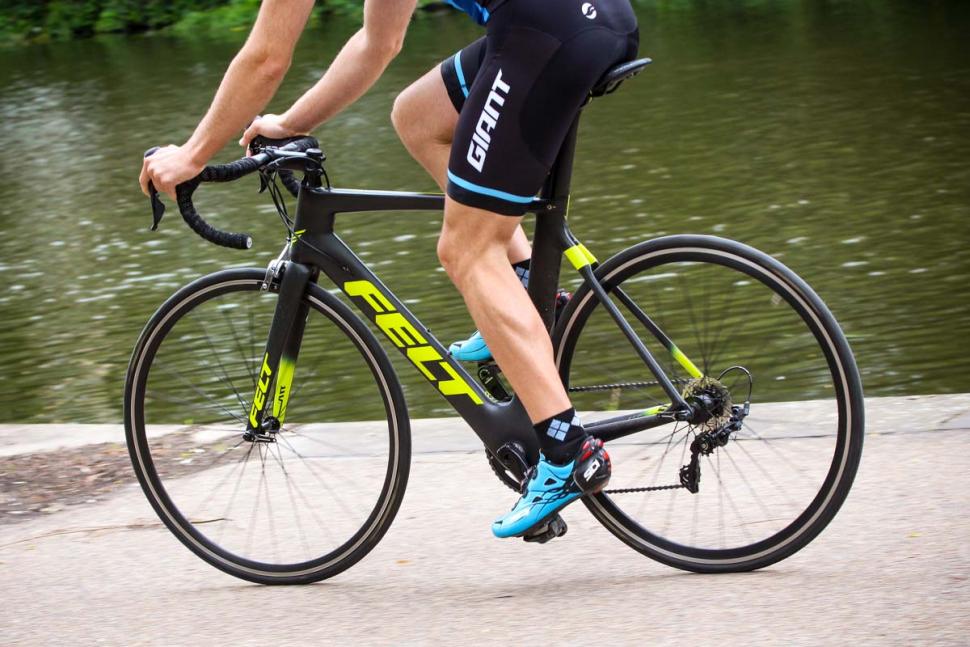




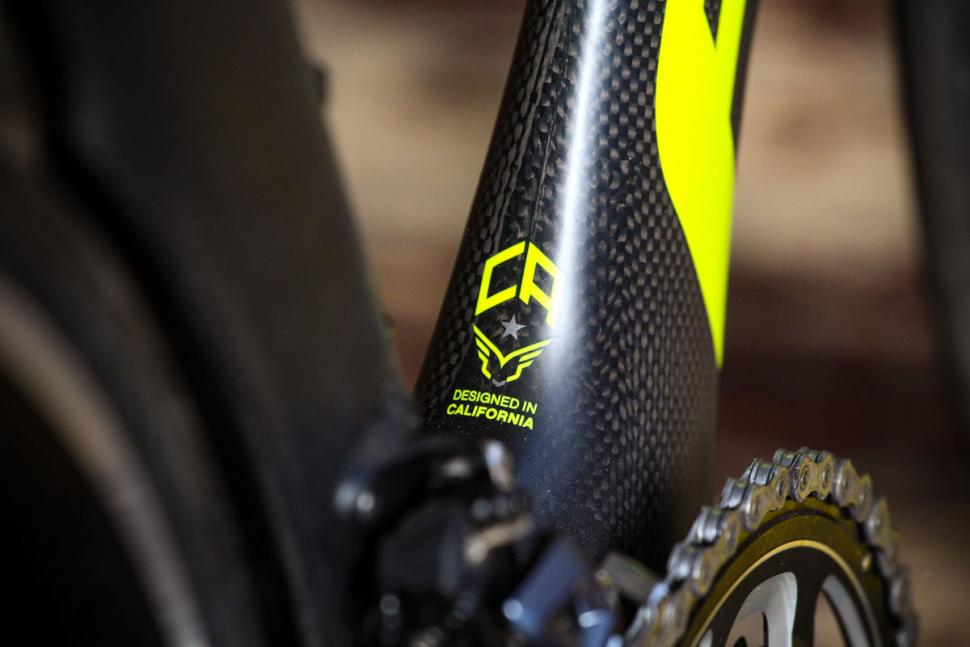
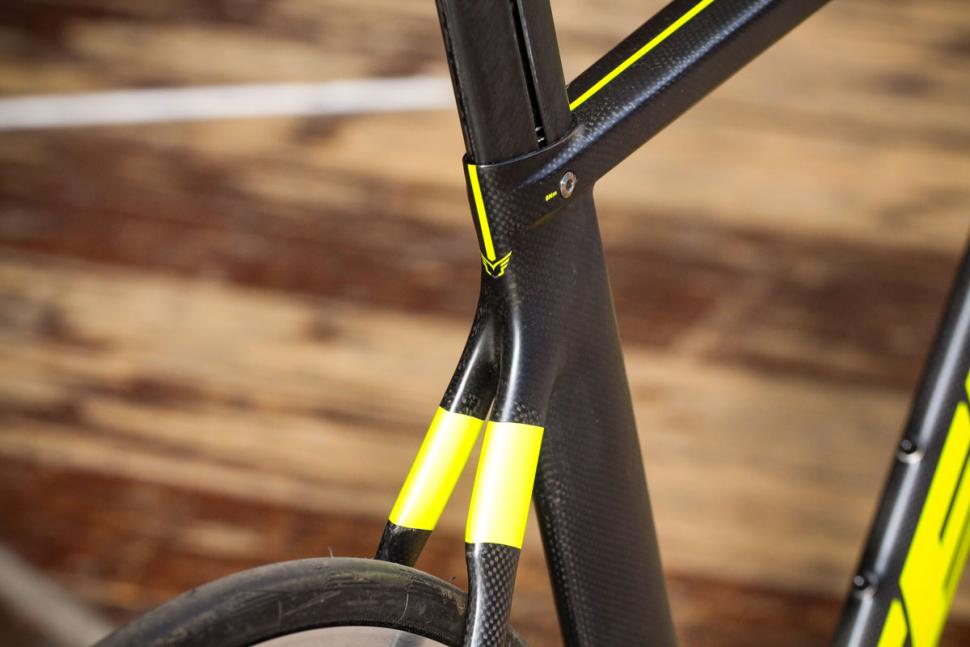
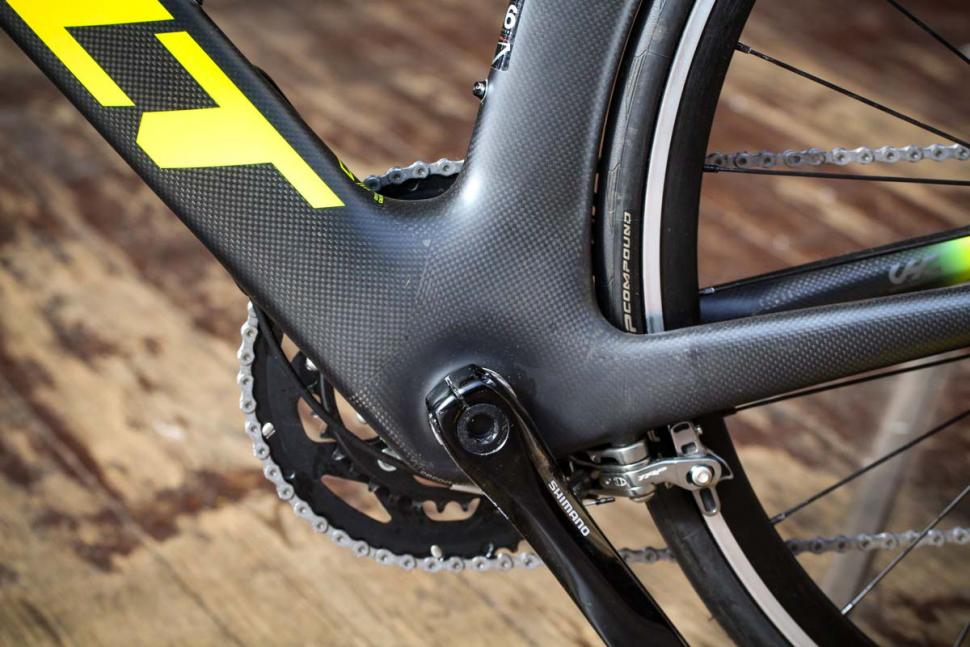
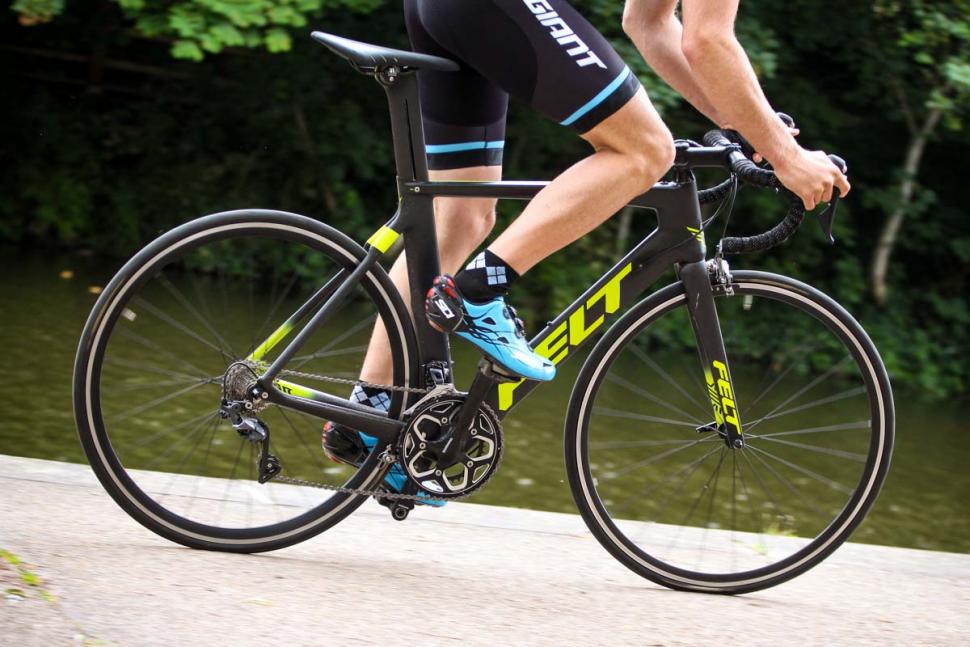
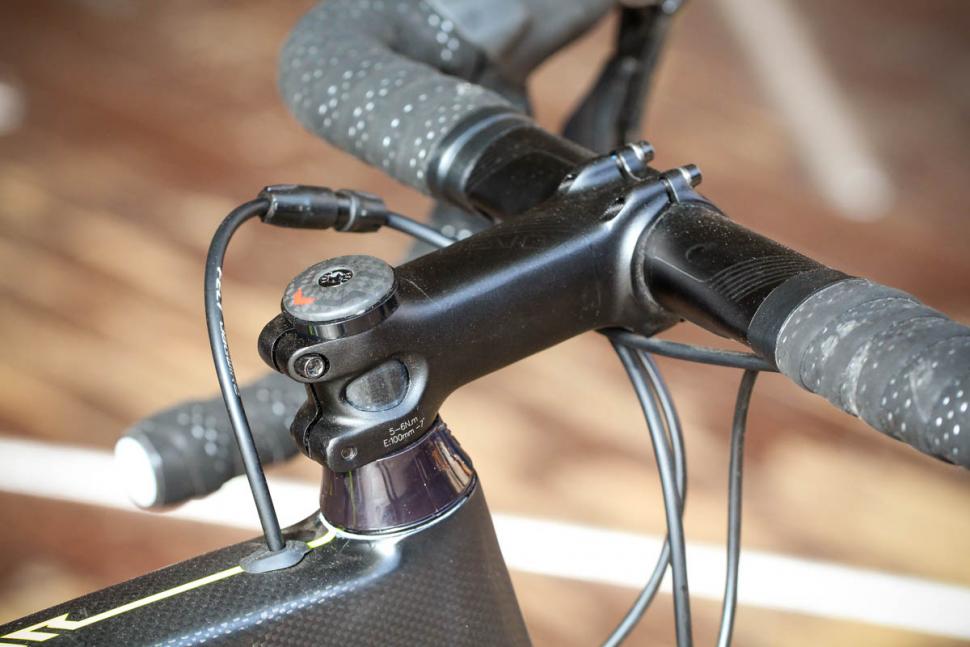
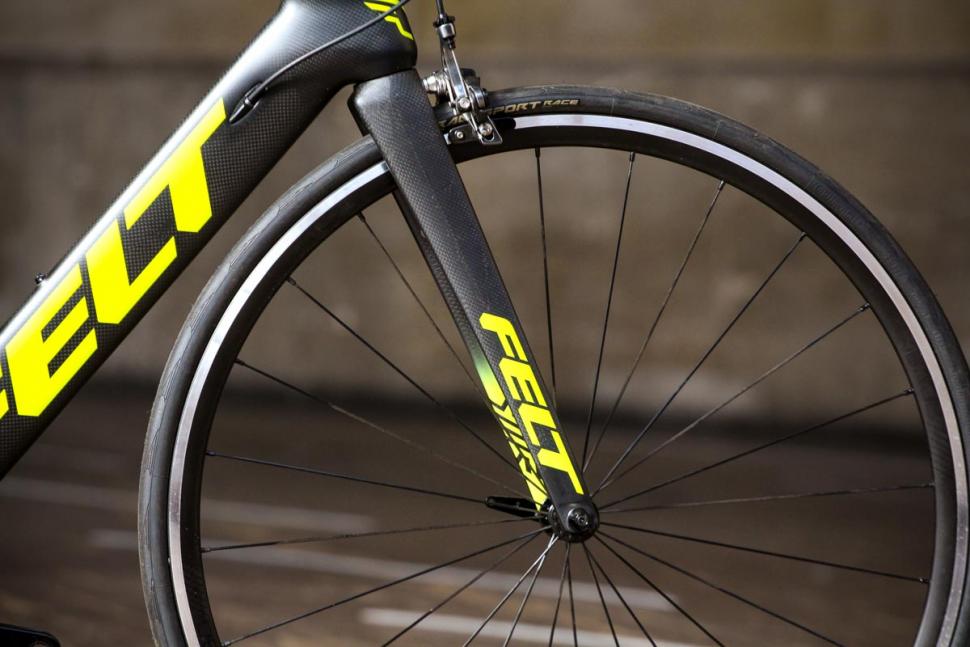

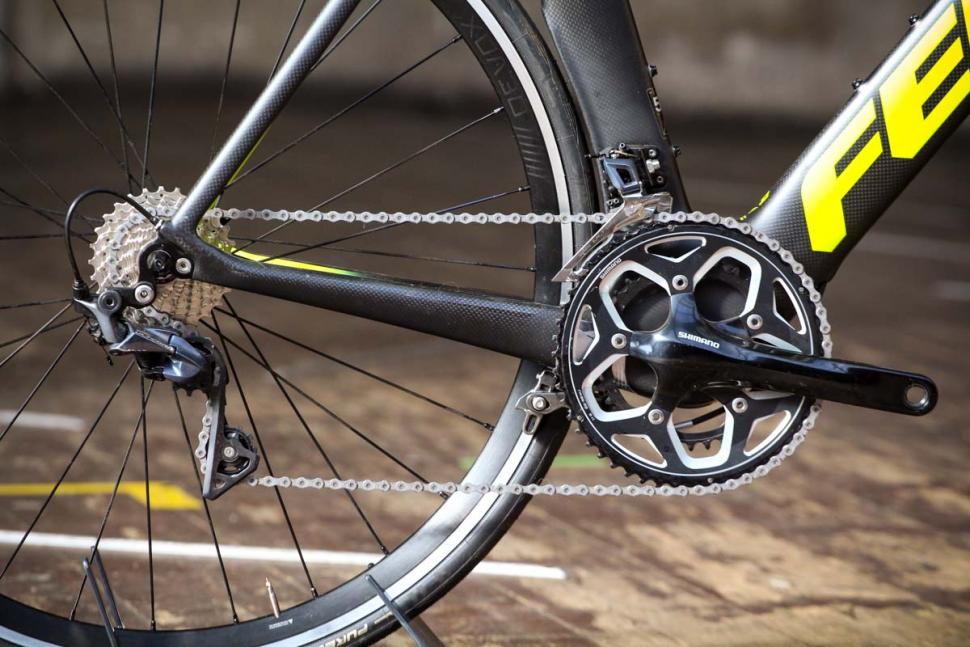


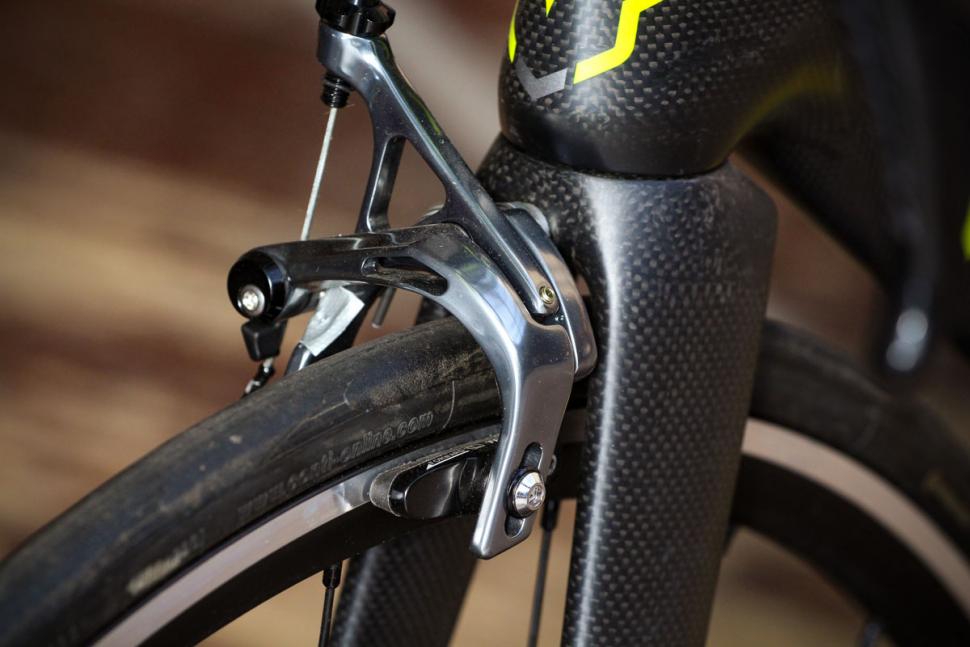

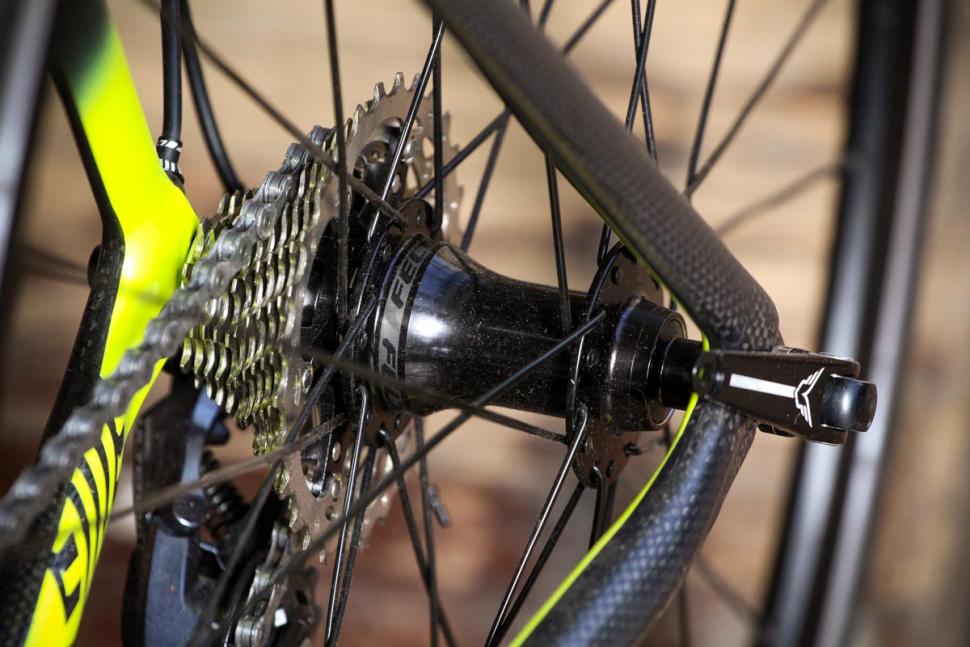
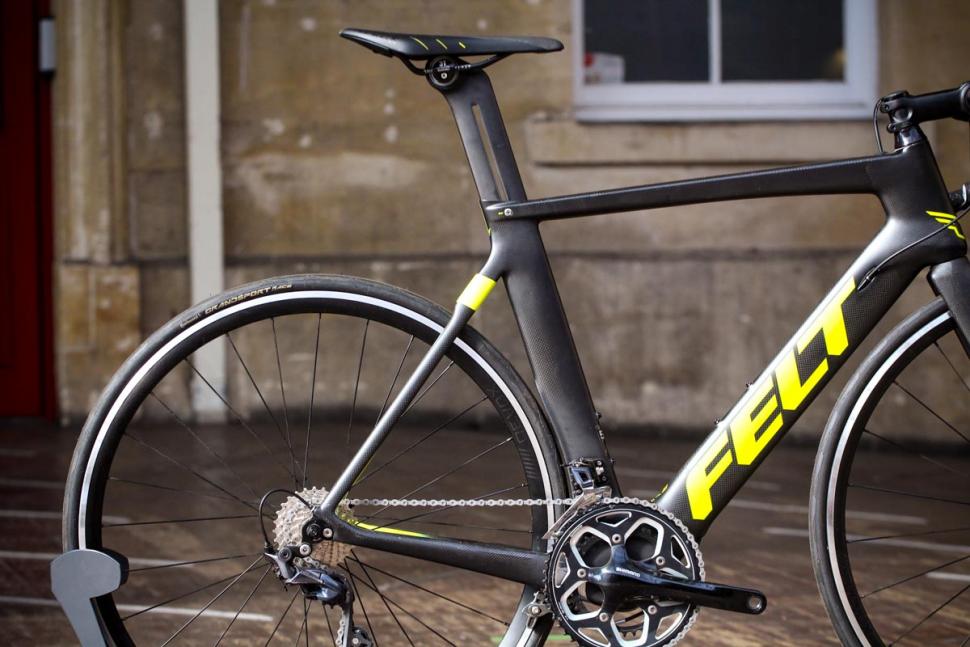
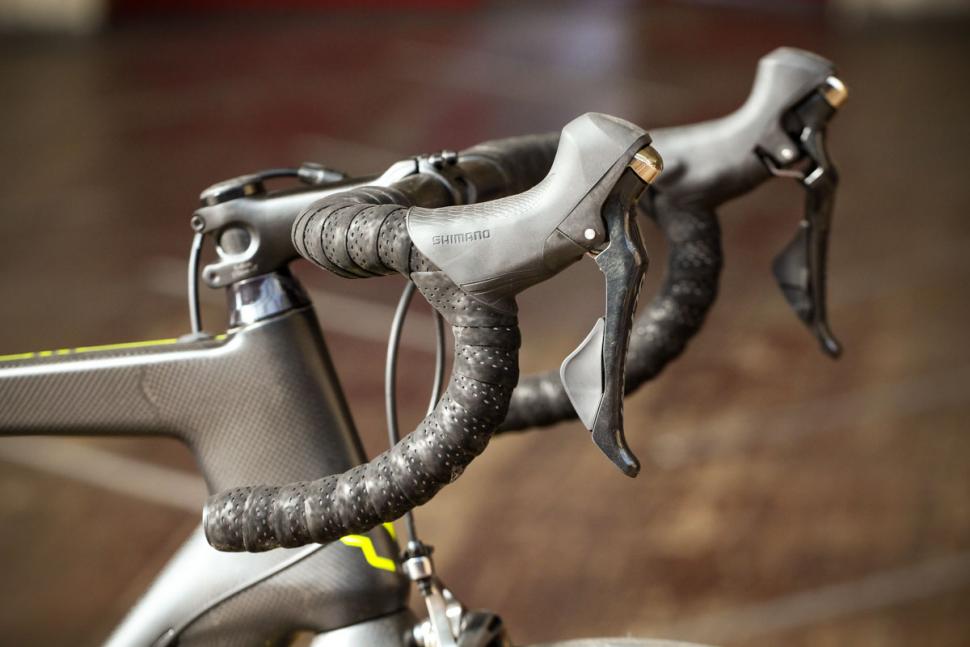



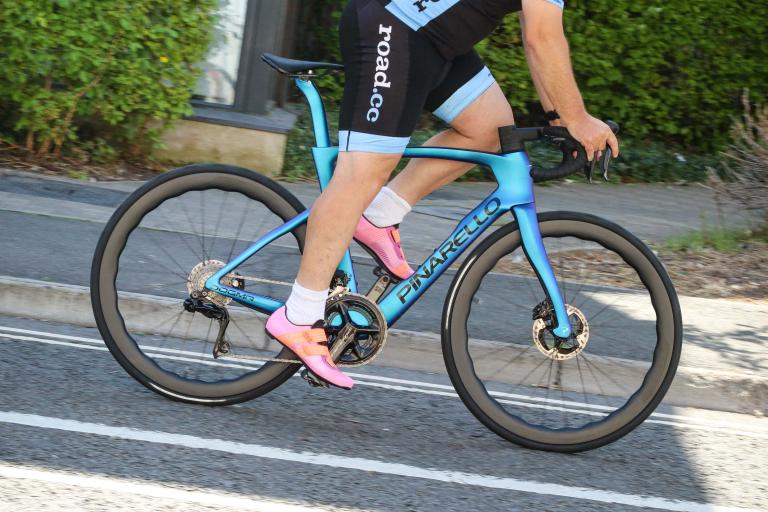
Add new comment
12 comments
First post and it was a double post doh!
I have a 2015 AR3 - which has the same frame as this. It is fair to say Felt were ahead of the times with this - it's still one of the most aero offerings, and it holds its own in the weight stakes.
I also have a 2019 Bianchi XR4 - with the magnificent VIsion Metron 5D and completely internal routing thanks to di2 and discs.
It's an interesting comparisson. I have ridden the Felt on some long events (an 11hr coast to coast, a 17hr London-Paris and a 24hr time trial). It's comfortable enough in isolation - and make no mistake, on a set of 88mm carbon wheels - it's FAST. I'd love to try it with a similar aerobar setup to the Bianchi, but I'm going to shift the AR to it's time-trial setup (to justify keeping both..).
The Felt IS stiff. At times it can be like trying to sleep with your head against a car window. This was improved dramatically moving from 23mm tyres at 110psi, to 25mm (yes they do fit) at 80-90.
Where it isn't stiff - is laterally in the rear triangle. Standing on the pedals gets the annoing 'pfft pfft pfft' of pads on wheels. I originally put this down to wheels - I was running 55mm Planet X carbon fared alloy wheels. But it still does it on 88mm Carbons.
Going up always feels a bit laboured, like its OK to go up hill but it'd really prefer not to be, thanks. Compare that to the Bianchi which is happier to climb seated, and just feels like it wants ot be going quicker all the time.
It can also be a bit twitchy - I find it much more difficult to track a line than the Bianchi when descending.
Its a decent all-round bike, but it's happiest doing what it does best - going quickly in a straight line, turning pedal strokes into momentum.
The stiffness in the front end also has an annoying habit of causing speed wobble above about 45mph when touching the brakes. Invonvenient at best, Air Ambulance at worst (7 miles into the first ride on it...)
The Bianchi, by comparisson, is utterly sublime in terms of comfort, and on like for like wheels, I think is faster - but only by a few watts.
I'm going to a 12hr road-setup time trial in a couple of weeks, and my weapon of choice will be the Felt, because on the deep wheels it's quicker than the Bianchi.
If I had equally deep wheels for the Bianchi, would I take that? Probably. Except I'd be much more concerned about airport baggage handling.
So what am I saying in comparing a 3 year old 3k gbp with a 3 week old 7k gbp bike? Surprise surprise, things have moved on, and spending more does get a materially better bike.
However - you can spend more on an AR than on an XR4, and you can buy the XR3 or lower end XR4 for the same as the AR - so it's not as outlandish a comparisson as it first seems.
The Felt (mechanical ultegra, carbon wheels, no pedals / cages) weighs the same 7.6kg as the Di2/Disc Bianchi. Worth noting though, is that the (to be replaced) Alu Fulcrum Quattro wheels weigh the same as the 88mm carbons, and the Vittoria Rubinio tyres weigh 150g more each than the Conti TT tyres on the Felt. With new wheels and tyres, I'd expect the Bianchi to come close to 7kg.
Is the Felt a great bike? Yes, and if you want to use it for TT or Tri, the switchable geometry is brilliant. It's also seriously good value for money. The quality of the finishing on the frame is superb, and I love the techy feel of it. Next to the XR4, one looks like it was designed by maths and science, the other by Italians. They're both brilliant for it.
I'll only consider selling the AR if I end up getting a full on TT Rig - but it'll have to be a hell of a bike to replace it.
metal.JPG
I would just like to clarify that you can use 25mm tyres on this model.
I have this model and I am running 25mm tyres on the stock wheels.
Great to see a good, honest review.
A shame that felt has specced this bike with some basic components but for the reviewer to state that the frame lacks adequate clearance for 25mm tyres is downright wrong. I've been running 25mm GP4000's on relatively wide wheels for over 4000 miles on this bike and never experienced any tyre rub or scraping, the bike wasn't even tested with 25's so there was no 'tyre rub' to speak of! Look on any forum regarding this bike and you'll find hundreds of people doing the same, the bike simply wouldn't sell if it could only run 23's. Also its completely biased to give the wheels a 3/10 for durability for a single spoke loosening when roadcc's review for the Trek emonda sl5 gave the wheels a 7/10 durability score despite multiple spokes loosening! I was genuinely blown away by the comfort when I fitted 25's to my AR3 and bike radar gave the AR2/AR5 outstanding marks for comfort. My only gripe is that the front end isn't quite as stiff as some all-round race bikes, which isn't a massive issue provided you don't have Andre greipel's upper body.
Hmm not sure how i feel about this review. I will start by saying that I own a Felt AR2 and have done so for comming on 4 years.
Yes this bike is a 4 year old design and not to mention that is a big error. (being kind)
I have used my bike for tirathlons as well as road and crit racing and it has been great for this purpose. It is also used for a lot of training rides. Most of my trainig is 90-100km long at 36kph av.
25c tyrers will fit allthough I have been using wide rims with 23c for the best aero performance. (AL33 rim) I run tubeless with about 80psi. The biggest problem is running wide rims on the duel pivot shimano ultegra brakes as they dont relly go wide enough..
My personal opinion that with this setup it is relly quite comfortable running a zipp sl70 ergo bar. I have no issues with going for a 150-160 km ride on it.
My biggest area of dispute with the review is that the bike is stiff. I find that it is actually quite laterally loose, that is you can easily tie it in knots when sprinting (got many a speed shimmy) and that the rear brakes are very easy to get rubbing when powering out of the saddle.
That asside this bike is designed with quite a narrow performance goal, going fast for minimum watts and that it does, very well. I love riding the bike and it is an involving livley ride.
I commute a lot on a CAAD12 and that feels pedestirian in comparison!
My2p
That's consistent with when I was researching a new bike purchase last year, spotted a few Felt AR variants at good prices, and almost pulled the trigger but for the consensus being the frame was a bit of a wet noodle.
A few months ago my cousin managed to snag an AR1 on ebay for about the same as one of these AR4's. It was a training bike for one of the Holowesko-Citadel sprinters, meticulously maintained (would barely know it had been ridden before except for some parts of the bar tape being a little worn). The team was switching bike sponsors, and since I'm guessing the guy hadn't paid for the bike to begin with he didn't care that he could have charged several thousand more. He even included the power meter and mint-looking Ksyrium Elites, with a new chain and cassette. Guy was really nice in corresponding with my cousin.
Anyways, it's a beautiful bike, and pretty dang light for such deep aero tubes. But yeah... cousin has 23mm tires running on relatively narrow Rolf wheels, and when I'm riding his wheel I can't get over how little space there is between the seat stays. I highly doubt 25's would fit, and even 23's could get tight if he tried a newer Zipp or Enve type of wheel that are 26mm+ wide. Doesn't affect him much since that's his normal wheel/tire setup anyways, but I don't know if could go back to riding 23's (at least on the rear wheel).
Bet the Giant Propel outsells that 100/1
Bet the Giant Propel outsells that 100/1
Bet the Giant Propel outsells that 100/1
Hmmm... I think I'll pass ...
...